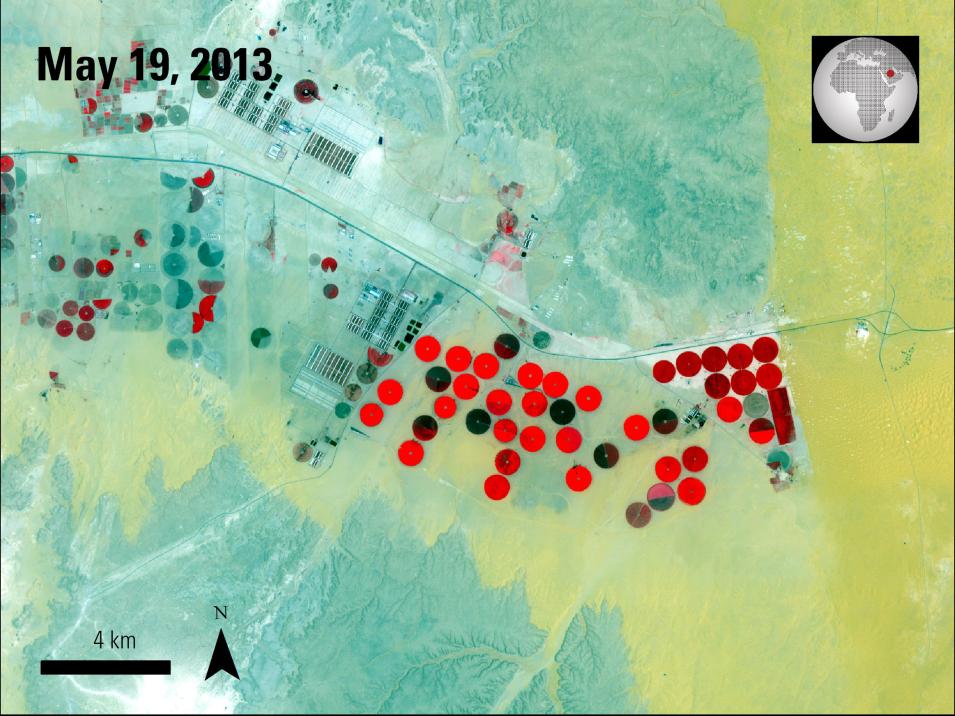Introduction
Data products from the Land Processes Distributed Active Archive Center (LP DAAC) are used in many different applications. They play an important role in modeling, help to detect changes to the landscape, and are a way to assess ecosystem variables, among others. A few of these applications that were published between January and March 2015 are highlighted below. The studies highlight how data collected by the Moderate Resolution Imaging Spectroradiometer (MODIS) and Advanced Spaceborne Thermal Emission and Reflection Radiometer (ASTER) instruments can be applied to a diverse set of land remote sensing studies.
Informing Crop Decisions with Water Productivity Data
In many areas of the world, farming, industrial pursuits, and residential applications increase the demand for fresh water, while the availability of fresh water decreases. According to Patil and others (2015) in their paper "Assessing agricultural water productivity in desert farming system of Saudi Arabia" published in IEEE Journal of Selected Topics in Applied Earth Observations and Remote Sensing, this trend is observed in places like Saudi Arabia where demand for food and subsequent demand for fresh water is increasing.


